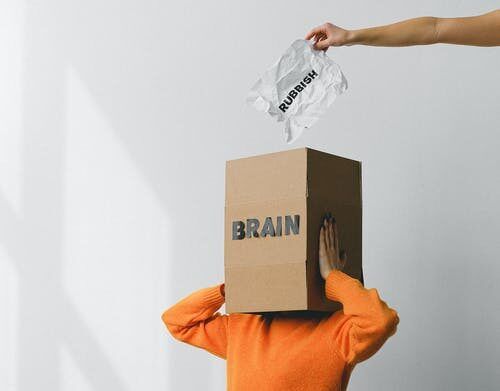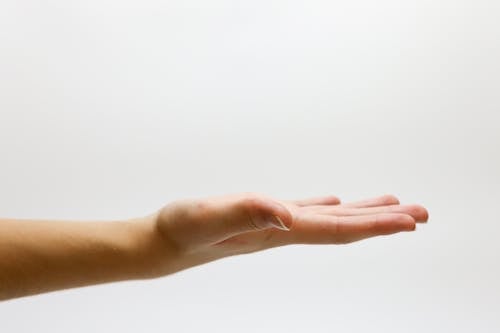
Mental health is a crucial part of every aspect of our daily lives, from childhood and adolescence throughout to adulthood. Our mental health affects the way we think, the way we feel, and the way we behave. It also impacts how we handle stress, interact with others, and make decisions. So, what if there were wellness gadgets and devices that helped improve your mental health?
It’s easy to think of mental and physical wellness as separate ideas, but your brain is an integral aspect of your body. Many physical symptoms can be caused by mental factors, such as insomnia, heart palpitations, or exhaustion.
Getting the care you need as soon as possible helps you keep your mental illness symptoms from escalating or expanding to your physical body. Thankfully, there are several wellness gadgets available to help you monitor and even improve your mental health. Check out the below wellness gadgets that could significantly improve your mental health:
1) Wearable Devices
Wearables have grown in popularity as technology has advanced and become more compact and convenient to carry. You can use wearable technology to help get your steps in, keep in contact while on the go, and even relax.
Wearables connect to your smart devices, transmitting data and allowing you to examine it in real-time. Previously, obtaining most of your essential health information was achievable, but it was time-consuming. It also needed technology that wasn’t always convenient, such as patient monitoring systems, which have progressed to include arrhythmia analysis at the patient’s bedside.
Wearable devices can include bracelets that help users relax by sending gentle, soothing vibrations around the wrists or ankles, depending on the situation. They also might include devices you can wear around your neck or on your head to help you sleep better at night and give you an extra boost of energy.
The Hapbee wearable device for mental health plays recordings of a molecule’s unique magnetic frequency. Your body feels the effects of the molecule without the side effects from ingesting the compound. For example, with Hapbee, you can feel the effects of caffeine without drinking a cup of coffee, or feel the effects of melatonin and sleep through the night without taking a sleep aid.

2) Finger Pore Devices
A finger pore device can assist you in tracking and understanding your emotions through sensors that monitor your finger pores, which are said to be extremely sensitive to stress levels.
To operate the gadget, you press down on the gold-plated sensors with your index finger and thumb. The device then measures how calm or stressed you are, to help you become more aware of your emotional patterns.
The device works with a few different apps. The first one is a relaxation software with audio feedback and guided relaxation techniques. The second app is designed to teach you how to stay focused when faced with a challenging situation. It achieves this by placing you in an artificially stressful environment, such as a competition, where you can test out several stress management techniques to find which one works best for you. These strategies then help you to stay calm, even when under pressure to perform in real life.
Once you’ve become more aware of your emotions and feelings, you’ll be able to make note of which aspects of your life stress you out and which ones calm you down and can take steps to make changes in your life.
3) Video Games for Mental Health
Yes, it’s true, playing video games can actually help manage pain and psychological stress. People with anxiety, attention deficit hyperactivity disorder (ADHD), post-traumatic stress disorder (PTSD), and depression can all reap benefits from playing certain video games. This is because they often require people to interact with others and provide users with practice in cognitive problem-solving skills and relaxation techniques in a safe, low-stakes environment.
Video games can now be prescribed by a doctor. In fact, the FDA approved the first prescription video game in June. This is a fantastic example of a technological tool that uses people’s natural routines to improve their mental health in measurable ways by giving them feelings of accomplishment and collaboration.
4) Relationship Monitor
Do you have reservations about some people in your life? Do you have a sneaking suspicion that someone in your life is toxic for you, but you aren’t sure? The relationship monitor is a wristband device that works in connection with an app on your phone to compile and analyze data for trends. Combined with some online forms the app helps you get a clearer picture of your relationships.
This device gives you a breakdown of who’s having the most impact on you in your life and who is taking action on your behalf, such as inviting you to hang out. It can help you understand who to block or unfriend by employing a technical statistic called “heart rate variability.” This detects your emotional state by analyzing small changes in your heart rhythm every time you come into contact with someone.
5) Virtual Reality
Virtual Reality is a popular concept amongst gamers, but it’s also advantageous in the mental health field. According to research, virtual reality tools have previously been effective in treating anxiety, phobias, and post-traumatic stress disorder, among other conditions.
For example, in the classroom, VR can help children with ADHD practice focusing, and autistic people to practice navigating complex social settings like job interviews.
It’s also easy to try things out over and over again that might be too dangerous or embarrassing in the actual world. Not only is VR more practical, but because individuals realize it’s just a simulation, they’re more likely to engage in virtual versions of situations that normally cause them fear.
Therapy is also made easier with VR. For example, a few virtual counselors can sub for a therapist if they’re not available for every VR session. A graduate psychologist or peer supporter can conduct sessions with the user, providing support and direction along with the therapist all with the same VR experience.
Conclusion
It doesn’t matter how old you are, new tech isn’t just for young people. The wellness gadgets mentioned are just some of what’s available for people to use for their mental health. So, whether you want to play a game, try some virtual reality, or wear a device to monitor your body metrics, the choice is yours. All of these wellness gadgets are worth a try if you struggle with mental health or mood disorders.







Comments are closed.